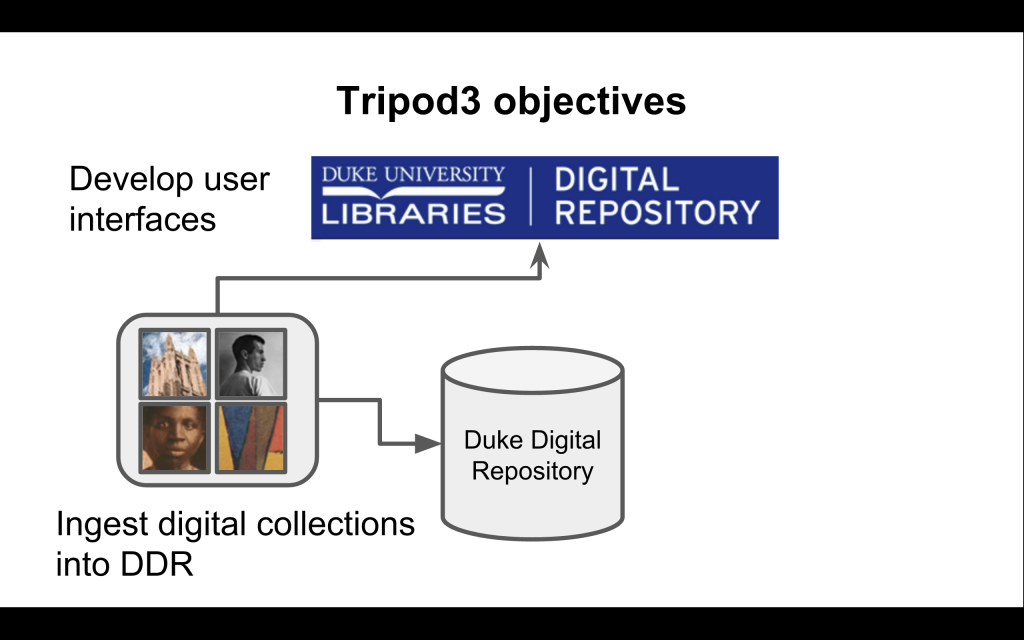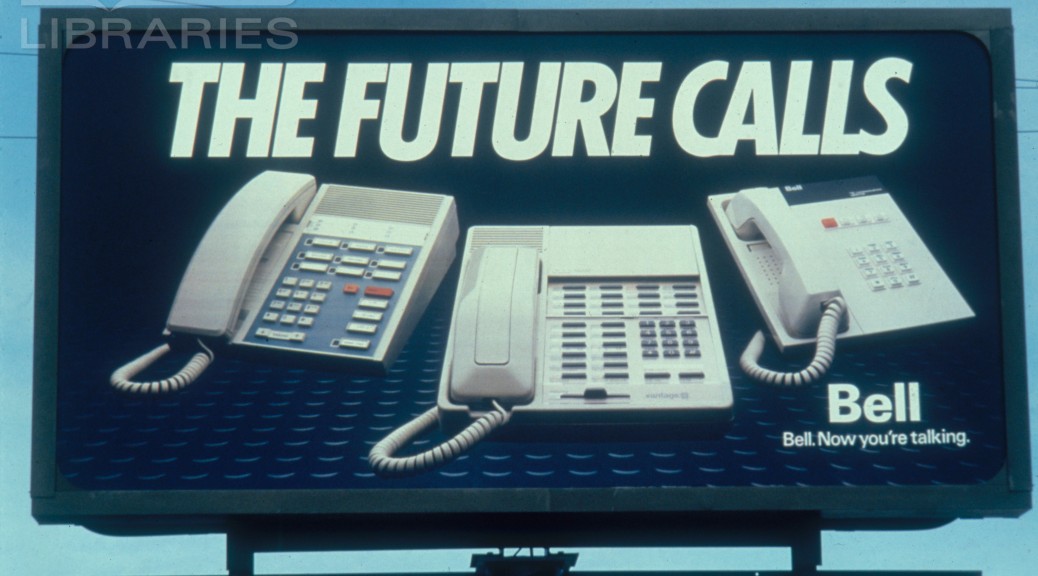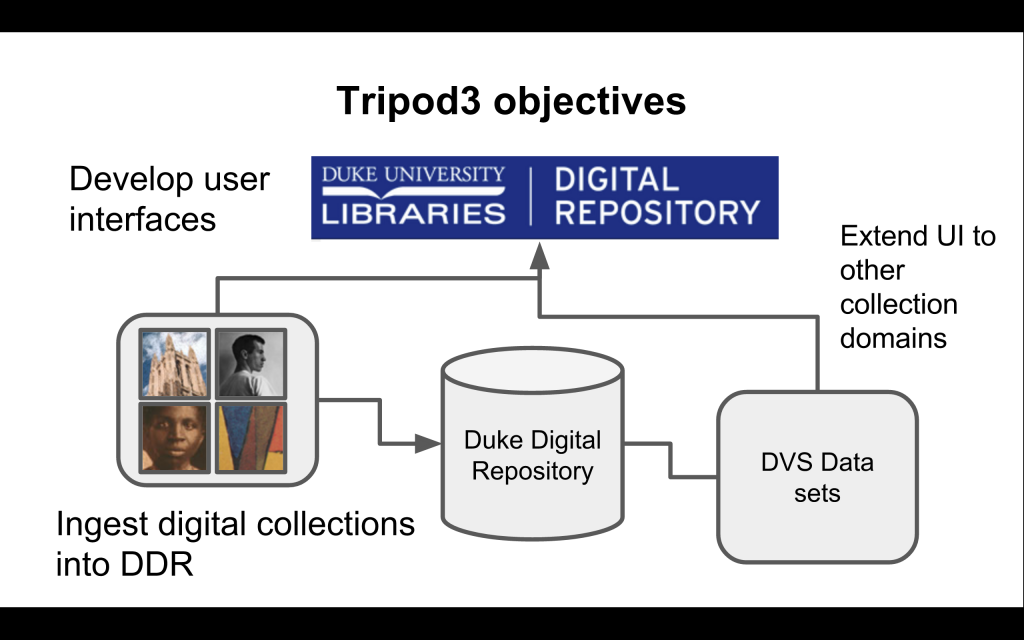Yesterday was Back to the Future day, and the Internet had a lot of fun with it. I guess now it falls to each and every one of us, to determine whether or not today begins a new future. It’s certainly true for Duke Digital Collections.
Today we roll out – softly – the first release of Tripod3, the next-generation platform for digital collections. For now, the current version supports a single, new collection, the W. Duke, Sons & Co. Advertising Materials, 1880-1910. We’re excited about both the collection – which Noah Huffman previewed in this blog almost exactly a year ago – and the platform, which represents a major milestone in a project that began nearly a year ago.
The next few months will see a great deal more work on the project. We have new collections scheduled for December and the first quarter of 2016, we’ll gradually migrate the collections from our existing site, and we’ll be developing the features and the look of the new site in an iterative process of feedback, analysis, and implementation. Our current plan is to have nearly all of the content of Duke Digital Collections available in the new platform by the end of March, 2016.
The completion of the Tripod3 project will mean the end of life for the current-generation platform, which we call, to no one’s surprise, Tripod2. However, we have not set an exact timeline for sunsetting Tripod2. During the transitional phase, we will do everything we can to make the architecture of Duke Digital Collections transparent, and our plans clear.
After the jump, I’ll spend the rest of this post going into a little more depth about the project, but want to express my pride and gratitude to an excellent team – you know who you are – who helped us achieve this milestone.
The overall arc of the Tripod3 project has three important objectives, which I’ll illustrate here with some slides from a presentation that I’ve given to stakeholders in recent weeks. Each of these objectives represents an important area of concern in our approach to digital collections .
Objective 1: Ingest digital collections into the Duke Digital Repository.

The use of the Duke Digital Repository as the base platform for the project is one of its most significant aspects. We are investing in a true preservation architecture for the materials that we produce in our Digital Production Center, or in arrangements with digitization vendors. We are also joining the Hydra community, a group of “like-minded institutions” whose developers, analysts, and experts in various areas are communicating and collaborating around the problems of digital preservation and access. It’s a major step forward for our digital collections implementations, which have always been largely internal and somewhat idiosyncratic. Our IT suitemates in Digital Repository Services have been critical partners in the Tripod3 project, and we’re grateful for the time and effort they have put into making it work.
At the same time, working with the repository framework has required our team to learn new technologies. We’ve moved from Python and Django to Ruby on Rails; we’ve implemented the IIPImage server and the OpenSeadragon viewer; and we’ve learned about Blacklight, the “discovery platform framework.” The great learning curve on all of these new technologies has extended from the convening of the project team in January, but we have all developed our skills and knowledge along the way. Cory Lown highlighted some of our new technologies just a few days ago.
Objective 2: Develop user interfaces for digital collections.

The second objective is to develop user interfaces for digital collections within the framework of the Duke Digital Repository. We have based our work mostly on a series of several hundred user stories we recorded during a day of brainstorming and pizza, in November of 2014. During the weeks leading up to today’s rollout, we held feedback sessions with seven different groups at Duke University Libraries, including some 37 colleagues not on the project team. The library’s Assessment & User Experience Department also conducted usability testing on an earlier version of the site in early October.
We have adopted an Agile methodology for this project, which is, for the most part, new to our department. “Release early, release often” is one of the catchphrases of Agile, and one we have adopted with today’s release. We expect the site to evolve as we bring in more content and hear more feedback from our colleagues and external users.
Objective 3: Extend UI to other collection domains.
Finally, the third objective of the Tripod3 project is to extend the interfaces that we build for digital collections to other collection domains hosted by the Duke Digital Repository. The DDR is a major enterprise platform that will bring together many other collections of digital assets curated by the libraries and the university. The example I’ve used in the slide is the set of Data and Visualization Services Department’s data sets, but we expect many more to populate the framework as time goes by. This objective highlights the important fact that Duke Digital Collections exist wthing the context of a larger ecology of research and resources.
Duke Digital Collections is a growing program, with many important and exciting projects in progress. It’s important that we have a technology platform that presents our work in a way that makes materials discoverable and accessible to researchers and the public at large. Today marks a critical step in that effort.



